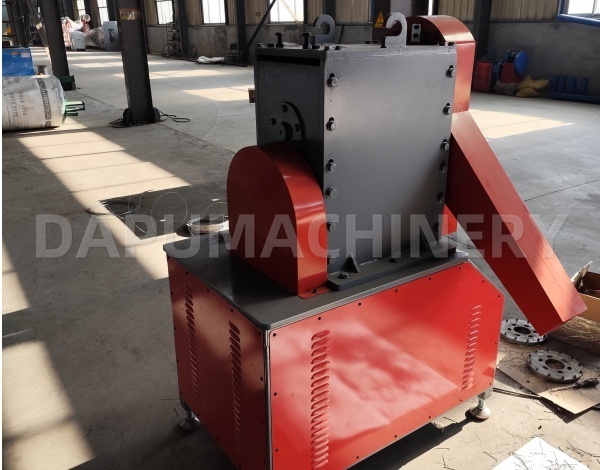
Top 5 Steel Fiber Machines for Industrial-Grade Production in 2024
Category:News
Author:
Source:
Add time:2025-04-25 11:29
As global infrastructure projects expand rapidly, steel fibers have become a critical component for reinforcing concrete in construction, mining, and industrial flooring. Emerging markets like South America and the Middle East are witnessing surging demand for cost-effective, durable, and adaptable steel fiber production solutions. However, businesses in these regions face unique challenges, including unstable power supplies, limited access to specialized raw materials, harsh operating environments, and the need for equipment that balances productivity with low maintenance.

To address these pain points, manufacturers must prioritize machines that offer flexibility, energy efficiency, and robust performance. Below, we explore the top 5 steel fiber machines tailored for industrial-grade production in 2024, with a focus on the groundbreaking DAPU Steel Fiber Machine DP-2000—a standout solution for emerging markets.
1. DAPU Steel Fiber Machine DP-2000: The Ultimate All-Rounder
Key Parameters
Type: DP-2000
Productivity: 2–7 tons/shift (adjustable for small to medium operations)
Wire Diameter: 0.3–1mm
Max. Fiber Length: 60mm
Motor: 3kW (energy-efficient)
Tensile Strength: 600–2880 kPa
Raw Materials: Stainless steel, galvanized wire, iron wire, etc.
Fiber Shapes: Hooked, flat, wave, and more
Dimensions: 1×0.72×1.5m (compact footprint)
Weight: 1200kg (easy to install and relocate)
Why It Leads the List
The DP-2000 is engineered to tackle the core challenges faced by businesses in South America, Africa, the Middle East, and Southeast Asia. Let’s break down its advantages:
Pain Point 1: Unreliable Power Supply
In regions like Africa and rural Southeast Asia, inconsistent electricity raises operational costs and risks downtime. The DP-2000’s 3kW motor consumes minimal power, reducing reliance on unstable grids. Its energy efficiency also aligns with sustainability goals—a growing priority for governments and contractors.
Pain Point 2: Limited Raw Material Availability
Local suppliers in emerging markets often prioritize low-cost materials like iron wire or recycled steel. The DP-2000 supports diverse raw inputs, including stainless steel (for corrosive environments) and galvanized wire (ideal for humid climates in coastal Southeast Asia). This flexibility lets businesses source materials locally, cutting import costs.
Pain Point 3: Harsh Operating Conditions
From the dusty mines of South America to the high-temperature worksites of the Middle East, equipment must withstand extreme conditions. The DP-2000’s heavy-duty construction (1200kg frame) ensures longevity, while its simple mechanical design minimizes maintenance—a critical feature for regions with scarce technical support.
Pain Point 4: Diverse Application Requirements
Steel fiber applications vary widely. For example, hooked-end fibers are preferred for tunnel construction (common in mountainous South America), while wave-type fibers enhance crack resistance in industrial flooring (demanded in Middle Eastern megaprojects). The DP-2000 produces multiple fiber shapes, allowing manufacturers to cater to niche markets without retooling.
Pain Point 5: Space and Mobility Constraints
Many factories in crowded urban areas (e.g., Jakarta or Lagos) lack space for bulky machinery. The DP-2000’s compact dimensions (1×0.72×1.5m) enable easy installation in tight spaces, and its modular design simplifies transportation to remote sites.
2. TurboSteel FiberMaster X3: High-Speed Production
Best For: Large-scale projects requiring 10+ tons/day
Strength: 8-ton/shift output
Weakness: High energy consumption (7kW motor)
Ideal for Middle Eastern megacities like Dubai, where speed is prioritized, the X3 suits stable industrial zones but struggles in areas with power shortages.
3. EcoFiber Prodigy E2: Solar-Compatible Design
Best For: Off-grid operations in Africa
Strength: Integrates with solar panels
Weakness: Limited to thin wires (0.3–0.6mm)
A niche solution for rural Africa, the E2 supports sustainability but lacks versatility for heavy-duty fibers.
4. IronFlex Compact C1: Budget-Friendly Entry Model
Best For: Small workshops in Southeast Asia
Strength: Low upfront cost
Weakness: Manual adjustments slow production
The C1 suits startups in Vietnam or Thailand but can’t match the DP-2000’s automation or output range.
5. GlobalTech MultiShape G5: Premium Customization
Best For: Specialized fibers (e.g., micro-fibers for 3D printing)
Strength: 20+ shape options
Weakness: Complex maintenance
While the G5 excels in innovation, its high skill requirements make it impractical for regions with training gaps.
Why DAPU DP-2000 Wins in Emerging Markets
While all five machines have merits, the DAPU DP-2000 strikes the best balance for South American, African, Middle Eastern, and Southeast Asian users:
Adaptability: Processes any locally available wire.
Cost Efficiency: Low power use + minimal downtime = faster ROI.
Resilience: Built to survive dust, humidity, and rough handling.
User-Friendly: Simple controls require minimal training.
For example, a construction firm in Nigeria could use the DP-2000 to produce galvanized fibers for coastal roads, then switch to iron fibers for affordable housing—all on the same machine. Similarly, a Peruvian mining company might leverage its hooked-end fibers to reinforce underground tunnels.
Conclusion
In 2024, steel fiber demand in emerging markets will hinge on machines that marry versatility with ruggedness. The DAPU DP-2000 stands out as the most pragmatic choice, addressing regional pain points through intelligent engineering. While TurboSteel, EcoFiber, IronFlex, and GlobalTech serve specific niches, the DP-2000’s blend of productivity, efficiency, and durability makes it the ultimate partner for industrial-grade growth.
Investing in the right equipment isn’t just about production—it’s about empowering businesses to thrive in challenging environments. The DP-2000 delivers exactly that.
Recommend News




